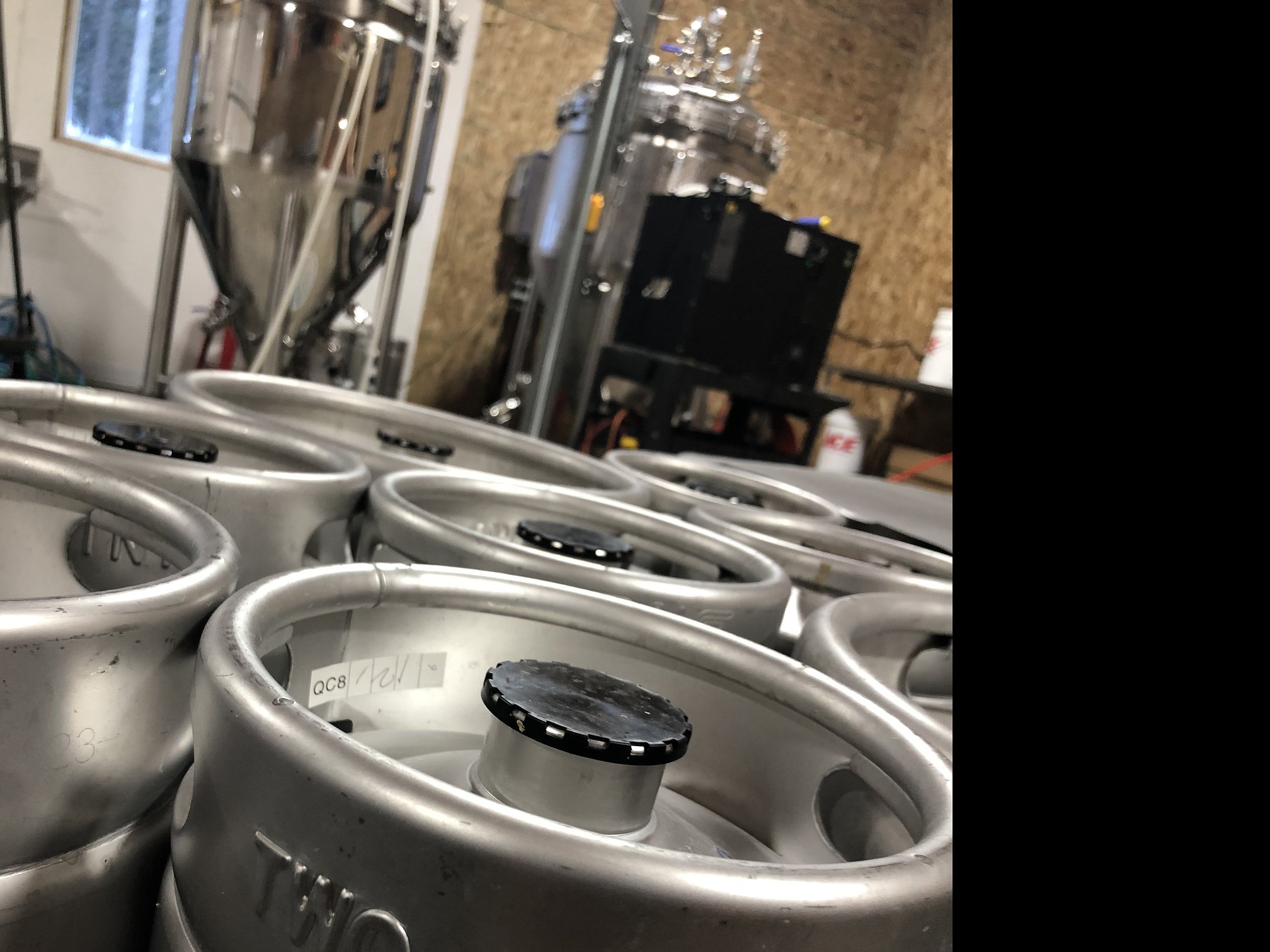Idaho beer, Idaho roots
ST. MARIES — Turn left off the pavement and the road winds under sweeping limbs of fir and pine.
It’s dust in the summer, but this winter it’s snow and ice with a trickle of black gravel the county truck left to prevent slideoffs.
Cross the creek and the road climbs, leaving the valley.
This land is homesteaded by Grant Lee’s great-grandparents, where from a ridge behind the house there’s a view of the St. Maries River. The St. Joe River is just across the highway.
It is where Lee and his wife, Kelli, started Two Saints Brewing, named after the rivers that run through the nearby town of St. Maries.
A few years in the making, the small-distribution brewery that came online last year is family-owned and operated. Two Saints produces five signature beers including an IPA, a stout, red and blonde ale and a lager.
The beers are sold mostly in St. Maries, up the St. Joe River corridor in Calder and Avery, and in two places in Coeur d’Alene: The Moose and Lyfe Public House.
Like Lee’s grandparents, who crafted a plan, scratched savings together and traveled to a new beginning of challenge and opportunity, the Lees had packed up and traveled, too.
After earning degrees from the University of Idaho — Grant in fisheries and wildlife and Kelli in art — the couple landed in Olympia, Wash. Grant worked as a fisheries biologist, Kelli was an administrator.
“We wanted to get back to Idaho,” Grant said.
Their well-laid plan would refashion Grant’s biology know-how into beer brewing chops and Kelli’s artistry into advertising, merch and the handmade labels on each can of Two Saints beer.
“That’s a cutthroat trout,” Grant said.
It’s on the label of the brewery’s Avery Blonde Ale, named for the tiny former railroad town along the river that anglers visit to catch Idaho's state fish, the cutthroat trout.
“That’s the Surveyor’s Ridge lookout,” Grant points to a can of Red Ives red ale, named after the ranger station built in the 1930s by the Civilian Conservation Corps in upper St. Joe River country. From Red Ives, a mule trail winding miles to the fire lookout was once the only means to deliver mail, supplies and material.
The St. Joe Special lager is named for a locally developed dry fly used to catch trout on its namesake rive. As for the Quick Three stout, well, there’s a personal story behind that one:
The couple, who have two small children ages 1 and 2, honeymooned in Ireland. They went looking for a tavern and asked a man for advice.
“He was the first dude we met,” Grant said.
The man, on his way home after work, advised that three quick cream stout beers, with lower alcohol content than many other beers, were just the ticket after a day on the job. Not too heavy, not overly light. The 16-ounce Two Saints brewery product depicts an olive-sided flycatcher, a bird common to North Idaho’s forests. Its song, as birders may know, is a melodious “quick-three-beers.” This coincidence was too much to not end up on a can of dry Irish stout.
The hazy swaths of orange on the can of August Skies IPA are reminiscent of North Idaho’s fire season, when wildfire smoke illuminates sunsets with its sultry pallet of tangerines, apricot and peach.
“It gets really hazy out there,” Grant said.
After constructing their plan for a brewery, saving money and researching the topic, the couple traveled from western Washington back to the St. Maries homestead and built a 36 by 40 structure on the family property. They added tanks, fermentation and filtration units.
Kelli’s designed merch — sweatshirts, T-shirts, hats and cups, sold mostly online — is stored in a room next to the granary that holds the hops, oats, malted wheat and barley.
“I don’t use any rice,” Grant said, adding that most of the grains are Idaho-raised.
“The oats go into the stout to make it creamy,” he said, adding that hues of malted grain from light yellow to umber brown determine color and flavor. “Anything you want creamy, that’s the way to get it. The lighter ones are sweeter, the medium grains make it caramelly. This one is called chocolate malt.”
The dark brown malted grain tastes coffee-like.
Lee is a self-taught brewer. Although community college courses in western Washington offered beer-making courses, Lee followed the path of many people faced with a conundrum. He went online.
“Brewing beer is one of the few occupations that you could learn entirely from YouTube videos,” he said.
The rest requires moxie.
Although the couple’s business took off late last year, there’s much more to be done.
Scratched out on their wall calendar are times and dates of brewing get-togethers in places like McCall, brewfests in Boise and other hobnobbing events for new and established Idaho brewmasters.
One day, the couple hopes to have their own local tap house.
Meanwhile, as the season’s first snowstorm whips white stuff around the brewery building on the side of a mountain, the couple is glad for the decision they made to come back home.
“We’ve got four generations living on this property right now,” Grant said. “We’re pretty fortunate to be here.”





